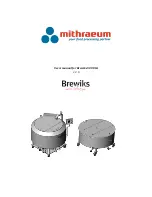
The following guidelines are based on average values and
deviations can and do occur:
•
Position 1 (fully shortened): patient height from about
140 cm and taller.
•
Position 5: patient height from about 170 cm and taller.
•
Position 9 (fully extended): patient height up to about
200 cm.
IMPORTANT
An individual trial fitting is strongly recommended
to determine a correct and safe setting for each
patient.
B
C
A
1
2
3
4
5
6
1
9
1
9
1.
Push and hold the red lever
A
on the boom upwards.
2.
Adjust the length of the lifting arm
B
to one of the nine
available positions indicated on the scale
C
, by placing
the desired position field before the edge of the boom.
3.
Release the lever
A
and slightly move the lifting arm
B
back and forth until an audible click is heard and it is
locked into position.
5.6 Adjusting the height of the leg
support
1.
Push and hold the button
A
on the leg support
B
.
2.
Slide the leg support
B
up or down.
3.
When the desired height is reached, release the button
A
and slightly move the leg support
B
up or down until
an audible click is heard and the leg support
B
is locked
into one of the 6 available height positions.
5.7 Using the leg band
1.
To apply the leg band, wrap the long padded part
around the leg support and the patient´s lower legs and
push the catch
A
into the buckle clasp
B
on the back
side of the leg support.
2.
To open, press the release mechanism
C
and pull the
catch
A
out of the buckle clasp
B
.
3.
To adjust the length of the leg band, either pull on the
lug
A
to shorten or push the lug
A
towards the buckle
to lengthen.
When there is no patient in the lift, wrap the leg
band around the leg support, close and shorten it
to tighten.
60127405-A
15
Summary of Contents for ISA COMPACT
Page 34: ...Notes ...
Page 35: ...Notes ...
















































